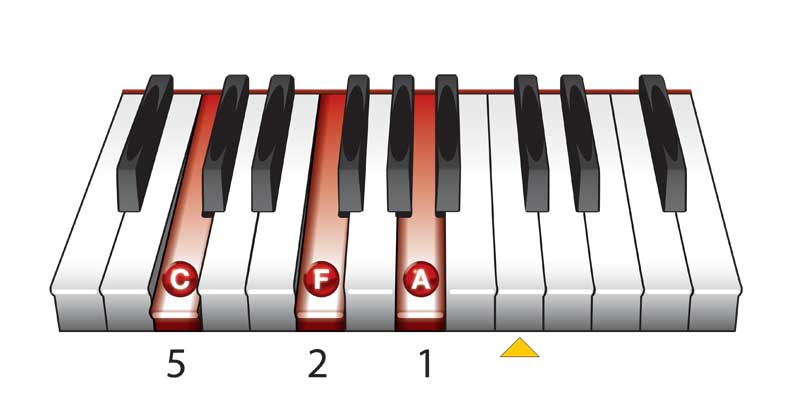
LESSON THREE
The Quarter Rest
This symbol is a quarter rest. It indicates one beat of silence. Do not play any note. Remember that small counting numbers are placed under rests.
| 6 | Good Evening Friends |
The F Chord
F
Chord Symbol

The next chord you will learn to play is the F chord. To play the F chord, use the first, second and fifth fingers of your left hand, as shown in the F chord diagram. The F chord introduces the note A below middle C.
When changing between the C and F chords keep your fifth finger in position as this note is common to both chords. When changing between the F and G7 chords keep your second finger in position as this note is common to both chords. Practice changing between C, F and G7.
The Half Rest
This is a half rest. It indicates 2 beats of silence.
The Lead-In
Sometimes a song does not begin on the first beat of a bar. Any notes which come before the first full bar are called lead-in notes (or pick-up notes). When lead-in notes are used, the last bar is also incomplete. The notes in the lead-in and the last bar add up to one full bar.
| 7 | When the Saints Go Marchin’ In |
When the Saints Go Marchin’ In is an early Jazz standard made popular by brass bands in New Orleans. The song uses a lead-in and also contains both quarter and half rests. The counting numbers refer to the melody (right hand part). Instead of writing a chord symbol above each bar of music it is common to only write a chord symbol when the chord changes, e.g., the first 6 bars of this song are a C chord.